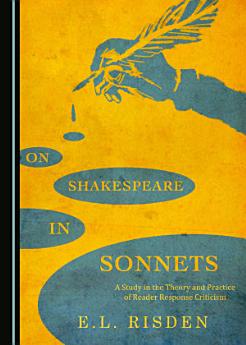On Shakespeare in Sonnets: A Study in the Theory and Practice of Reader Response Criticism
Jun 2017 · Cambridge Scholars Publishing
1.0star
1 reviewreport
Ebook
130
Pages
family_home
Eligible
info
reportRatings and reviews aren’t verified Learn More
About this ebook
Reader Response Theory began to take hold in the 1960s. Much like the phenomenological approach to criticism that preceded it, it allows both reader and author intentionality and conscious presence, and it gives the reader particular presence in the fulfillment or completion of the text. The work of art mediates between author and reader, and the reader participates in an interpretive community that gives the work life and liveliness. This book is divided into three sections: Part I discusses the history and practice of Reader Response criticism; Part II comprises a collection of thirty-eight sonnets responding both critically and creatively to Shakespeare’s works; and Part III discusses the poems of Part II as both creative and critical acts, elaborating on what they aim to show about the plays and how Shakespeare’s plays continue to encourage varied analytical and personal response. As shown here, the creative and the critical need not be separate, exclusive acts; each invades the other.
Ratings and reviews
1.0
1 review
MD MISBAUL HAQUE
- Flag inappropriate
February 7, 2019
The piece is nice
About the author
E. L. Risden, Professor of English at St. Norbert College in De Pere, Wisconsin, USA, teaches medieval and Renaissance literature, Classical myth, linguistics, and poetry. He has published twenty-four books, including works of literary and film scholarship, poetry, and fiction. His Shakespeare and the Problem Play: Complex Forms, Crossed Genres, and Moral Quandaries (2012) argues that nearly all of Shakespeare’s plays are “problem plays,” resisting easy readings and classifications. His Shakespeare’s Dramatic Maxims: A Politics of Rhetoric and Irony (2016) collects and comments on the dramatist’s use of maxims, a significant, traditional rhetorical strategy, and how their presence influences the plays.
Rate this ebook
Tell us what you think.
Reading information
Smartphones and tablets
Install the Google Play Books app for Android and iPad/iPhone. It syncs automatically with your account and allows you to read online or offline wherever you are.
Laptops and computers
You can listen to audiobooks purchased on Google Play using your computer's web browser.
eReaders and other devices
To read on e-ink devices like Kobo eReaders, you'll need to download a file and transfer it to your device. Follow the detailed Help Center instructions to transfer the files to supported eReaders.






